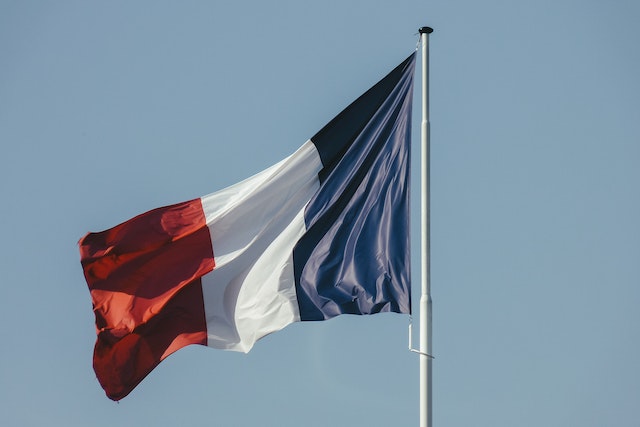
How many revolutions has France had? France has had three revolutions and they are currently on their fifth republic.
The first revolution was the big one. The one we learn about in school as “The French Revolution”. It started in 1789 and it ushered in the first republic. It began because of rising inequality in France. There was a very rigid caste system that kept the poor at the bottom and they had to pay half of their income in tax. 10 % of people owned nearly all of the wealth and King Louis XVI was an absolute monarch. Food shortages were ravaging the kingdom, but the top 10% lived in luxury. Finally, the people had had enough, and they overthrew the government and executed the king.
The first French Republic was declared on September 1792. It was a time of chaos and the “Reign of Terror”. The heads of the revolution ended up executing each other and the government they installed didn’t work. The country was bankrupt. Napoleon Bonaparte, who was fighting in Egypt, rode back to France to save the republic. He promptly made himself emperor, ending the first republic.
The second French revolution started in 1830. Napoleon had been defeated and exiled to Elba in 1814. He was forced to abdicate unconditionally and the French Senate asked Louis Stanislav Xavier, the younger brother of King Louis XVI who had been living in exile in England to become King. He became Louis XVIII. He was succeeded by his brother, Charles X, and it was this king who was overthrown by Revolution number 2.
Charles X had ruled for six years and wasn’t a very popular king. In 1830, elections were held but he didn’t get a government that he liked, so he suspended the constitution. He censored the press, and altered the electoral system. Police raided the newspapers, and the revolution began. It lasted three days and ended up with Charles X abdicating and the crown passing to his cousin, Louis Philippe I.
The third French revolution started in 1848. Louise Philippe wasn’t a bad king, but the economy deteriorated badly during his reign. Protests began in 1848 and quickly turned into a full-scale revolution. There were only three days of fighting, but Louise Philippe abdicated and fled to England. France entered its second republic. They elected Louis-Napoleon Bonaparte, nephew of the original Napoleon Bonaparte, as their president.
The second republic lasted for four years, before Louis-Napoleon took an opportunity and managed to reinstate the monarchy with himself as Napoleon III. He managed it by holding a coup in December of 1851 and, interestingly, the great novelist Victor Hugo organized the resistance in Paris.
Napoleon III was a popular monarch, and he modernized the French economy. He fought to have the Suez Canal built and prosecuted several successful wars. However, he made the mistake of declaring war on the growing state of Prussia in 1870 and he was soundly beaten. The Prussians forced him to abdicate, and the third French Republic began. Napoleon III would be the last monarch of France.
The Third Republic of France lasted until 1940. The government that arose in the aftermath of the war with Prussia was not intended to be the final government. They were a provisional government and were tasked with working out which monarch should replace Napoleon III. However, while they were going about the day-to-day running of the country, they realized that they didn’t really need a monarch after all. They improved the French economy and made the French empire into the second largest in the world. The Third Republic fell when Germany invaded in 1940.
The Fourth Republic was formed after the end of World War II and lasted for 12 years. The Republic wasn’t very successful and there were 16 prime ministers in 12 years. There were so many parties that it was impossible to make a stable government and the republic was headed for collapse. In the end, it was forced to dissolve itself by the French army in Algeria, a French colony. The army had taken control of Algeria. They demanded that the French government dissolve itself and bring in Charles de Gaulle to write a new constitution. The government were worried that all of their colonies would collapse if they didn’t do what the army said, so they called Charles de Gaulle back.
The Fifth French Republic was formed in 1958, and is still going strong as of today. Charles de Gaulle wrote the constitution, which is still the base of the one used today, and he became the republic’s first president. Will there be a Sixth Republic? Who knows.
So, France has had three revolutions, several coups, and five different republics in the space of about 250 years. And that is what I learned today.
Sources
https://www.studentsofhistory.com/causes-of-the-french-revolution
https://en.wikipedia.org/wiki/Napoleon
https://www.smithsonianmag.com/history/why-france-its-fifth-republic-180962983/
